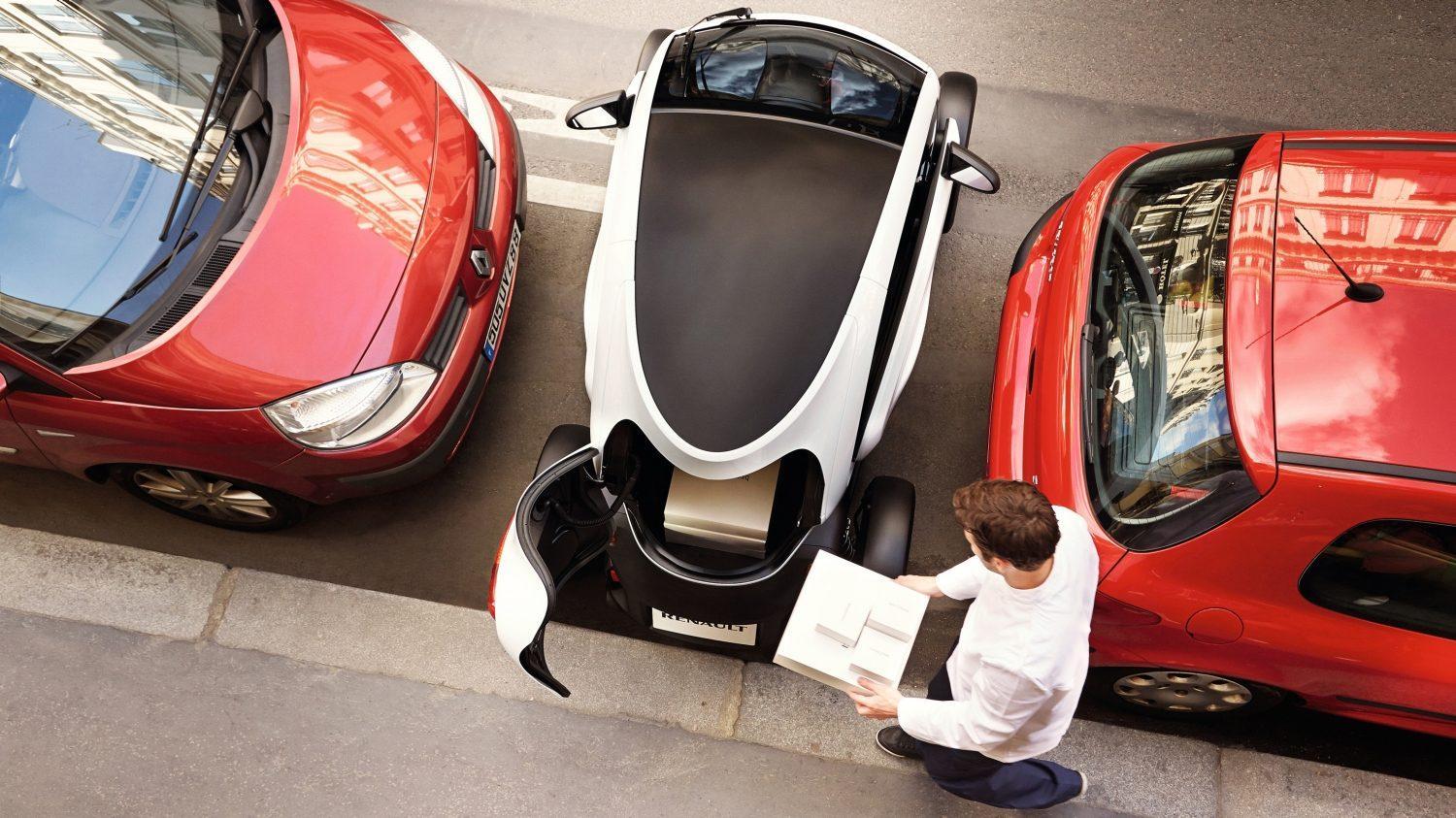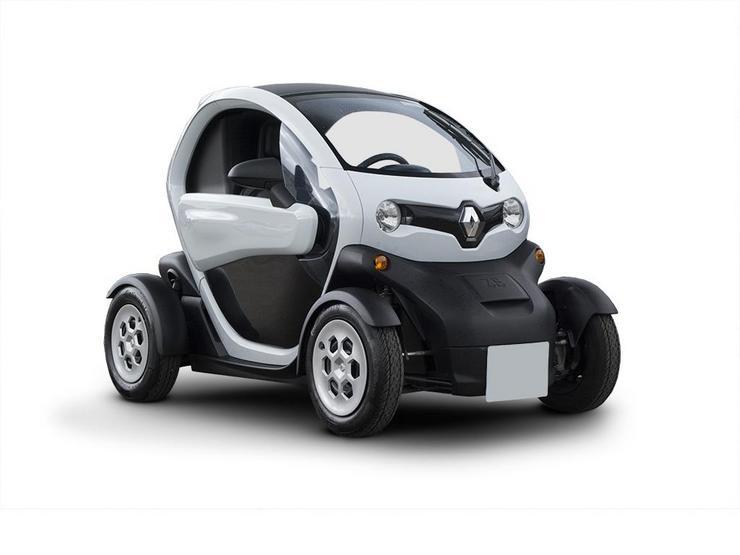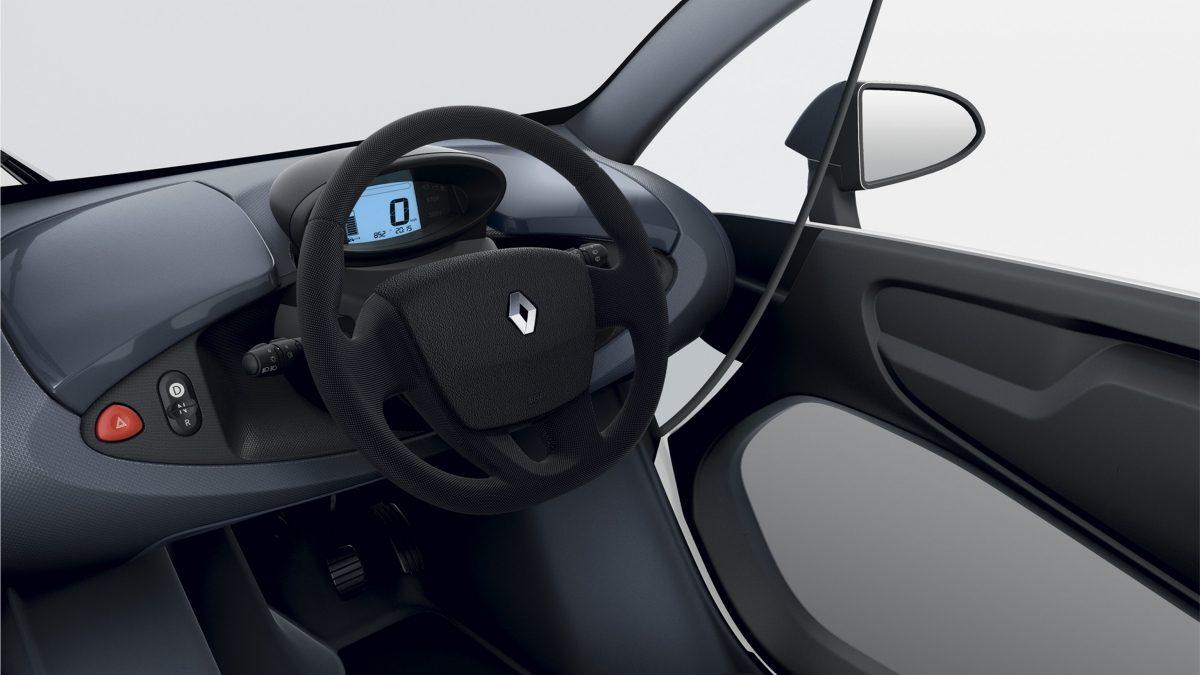Car Review: Renault Twizy Cargo
More of a Onezy

Your support helps us to tell the story
From reproductive rights to climate change to Big Tech, The Independent is on the ground when the story is developing. Whether it's investigating the financials of Elon Musk's pro-Trump PAC or producing our latest documentary, 'The A Word', which shines a light on the American women fighting for reproductive rights, we know how important it is to parse out the facts from the messaging.
At such a critical moment in US history, we need reporters on the ground. Your donation allows us to keep sending journalists to speak to both sides of the story.
The Independent is trusted by Americans across the entire political spectrum. And unlike many other quality news outlets, we choose not to lock Americans out of our reporting and analysis with paywalls. We believe quality journalism should be available to everyone, paid for by those who can afford it.
Your support makes all the difference.So, meet Britain’s smallest, coldest and most economical commercial vehicle. The Renault Twizy Cargo is obscure even by the obscure standards of the Renault Twizy, which I think I have only glimpsed once or so “in the wild”. The Twizy is best envisaged as a sort of cross between a mobility scooter and a Smart car. The usual Twizy, if that’s the right expression for such an unusual vehicle, has two seats in tandem; the Cargo model ditches the rear seat in favour of a boot that will carry about 180 litres and 75kg, about the weight of the average human being. It does boast supercar-style “scissor” doors; but there’s no lock on them.

This is what it is, then. A pure-electric one-seater car where doors and windows are optional extras, there’s no heater, no built-in radio (a Parrot does that via your smartphone), no sun visor, no rake adjustment for the single seat, and, to be frank, not much dignity for the poor old delivery driver who will be plying her lonely trade in one of these. I could imagine a postal worker in one of these. She will be cold, especially if there’s no windows, and more than a little lonely. She may have to endure the jibes from passers-by, as I did – “Come on” said the old geezer on a push bike as he undertook me on the inside”; “ridiculous” cried the schoolboy; “yap” was the heckle from a Bichon Frise moving at some pace; “wankah!” the damning verdict form an unidentified passer-by. Truckers tailgate you and bikers cut you up. You are put firmly in your place, towards the bottom of the pecking order, a sort of motoring equivalent of the status enjoyed by a nonce in prison.
Now I don’t want to give impression that the Twizy is slow, because it isn’t, well up to a limited 50 mph it isn’t, and it is more fun than being on a segregation wing or in Broadmoor. Just be clear. It has lots of low-down pulling power, and accelerates briskly up to urban speeds. It’ll get to 40mph and bit beyond without much complaint, but let’s just say that you know you’re doing that sort of speed. The lithium-ion batteries (laptop types) are stored around the floors, and thus the centre of gravity is low and cornering impressive. It doesn’t feel that insecure, though you are permanently mindful of your vulnerability. There’s an airbag in the steering wheel in front of you, though that’s only a few inches itself from the front of the vehicle, so I’m not sure how much help it would be. You tend to drive more conscious of hazards around you, and also because you’re relatively open to the elements (windows are available though, I am told). The disc brakes and the exposed suspension set-up are excellent (sophisticated double wishbones front and rear); this is a proper car engineered by a proper company, after all, its Renault badge prominently displayed on snout and tail.

There’s very little real estate here; it’s not much wider than a scooter, and somewhat shorter than a Smart car. It has an amazing 7-metre turning circle, and the steering is well weighted though not power assisted, not really needed on such a light machine with tiny wheels. The small footprint doesn’t make you less conscious, obviously, but if the Royal Mail, an estate agent or some trendy artisan baker, say, wanted to use it for publicity purposes there’s not much of a canvas to draw on. The roof could be painted I guess, and Renault offer a range of designs for those who really want to make a statement. Themes by the name of Daisies, Mango, Giraffe, Lava, Psychedelia, Pink Leopard, Grey Camo or the Welsh flag are offered as options, with further customisation available. “Twizy” derives its name from “two” (seater) and “easy”, but seeing as the Cargo van variant just has the single seat maybe it should be re-named the “Onezy”.
The spec
Renault Twizy Cargo
Price: £7,995 + £50/month battery lease
Motor: 17Kw Electric; 1-sp auto
Power output (hp): 17
Battery capacity: 27kWh
Top speed (mph): 50
0-30mp (seconds): 6.1
Fuel economy (mpg): n/a
Range: 56 miles (40 as tested)
CO2 emissions (g/km): 0
As far as economy and practicality is concerned it’s a mixed picture. You have to lease the batteries, which belong to Renault, for about £50 a month, that is on top of the £7,995 purchase price – though that adds to the security of the product warranty. The Twizy is unusual for an electric car now in that it is only chargeable via a conventional three-pin plug, which means most of the fast powerful electrical public charging points – and there’s a surprising number sprouting up now – won’t cater for it, so you will need to “refuel” at home or work, say. It took me about four hours to get most of a charge from a domestic mains, which is longer than Renault claim. It’ll cost you about £1 to do so, and you’ll be able to get about 30 or 40 miles out of it in this colder weather; it might be as high as 56 miles in summer and urban driving. The range, you see, really depends on odd factors such as how hilly your journeys, what the temperature is (GCSE chemistry should teach you that the cold is bad for batteries), and how fast you go. When I was being overtaken by toddlers it was because I was in the final buttock-clenching phases of range anxiety, when I was terrified that me and this bug-eyed vision of the future would find ourselves stranded in the middle of Cambridge Circus in London (the most dangerous junction in the country, by the way). As I got used to the Twizy, I just put my foot down and enjoyed leaving much fancier and more expensive cars and vans in the dust. Legally, by the way, it counts as a quadricycle rather than a car, so you won’t qualify for the government grant to buy one, nor the other grant to have a proper external recharging point fitted to the outside of your home. Arguably you can park a Twizy sideways (depends on the mood the warden is in).

You get too much soot and fumes in town to make it an altogether happy experience (you do need windows, as I’ve said), and I’m not sure I ever got quite used to being overtaken by Fiat 500s or Ford Fiestas. The thing the Twizy most reminded me of was one of those bubble cars from the 1950s, a cheeky sort of thing that is just an experience – and a future classic. The Twizy is, after all, a proper car with abilities that couldn’t have been imagined not so long ago. As one-seat literally personal transport the Twizy Cargo is ideal as a toy for the car enthusiast with an eye to the future. I doubt it’ll be replaced in quite the same way – with the Zoe, for example, Renault is developing more serious designs. Rare now, it’ll enjoy great curiosity value as a cute, fun-to-drive artefact of its times. Yes I’d be happy to have a Twizy in my life, though I’d be very anxious to escape the monthly battery fee, seeing as I’d like to keep it for many decades. Maybe they’ll relent one day.
Join our commenting forum
Join thought-provoking conversations, follow other Independent readers and see their replies
Comments